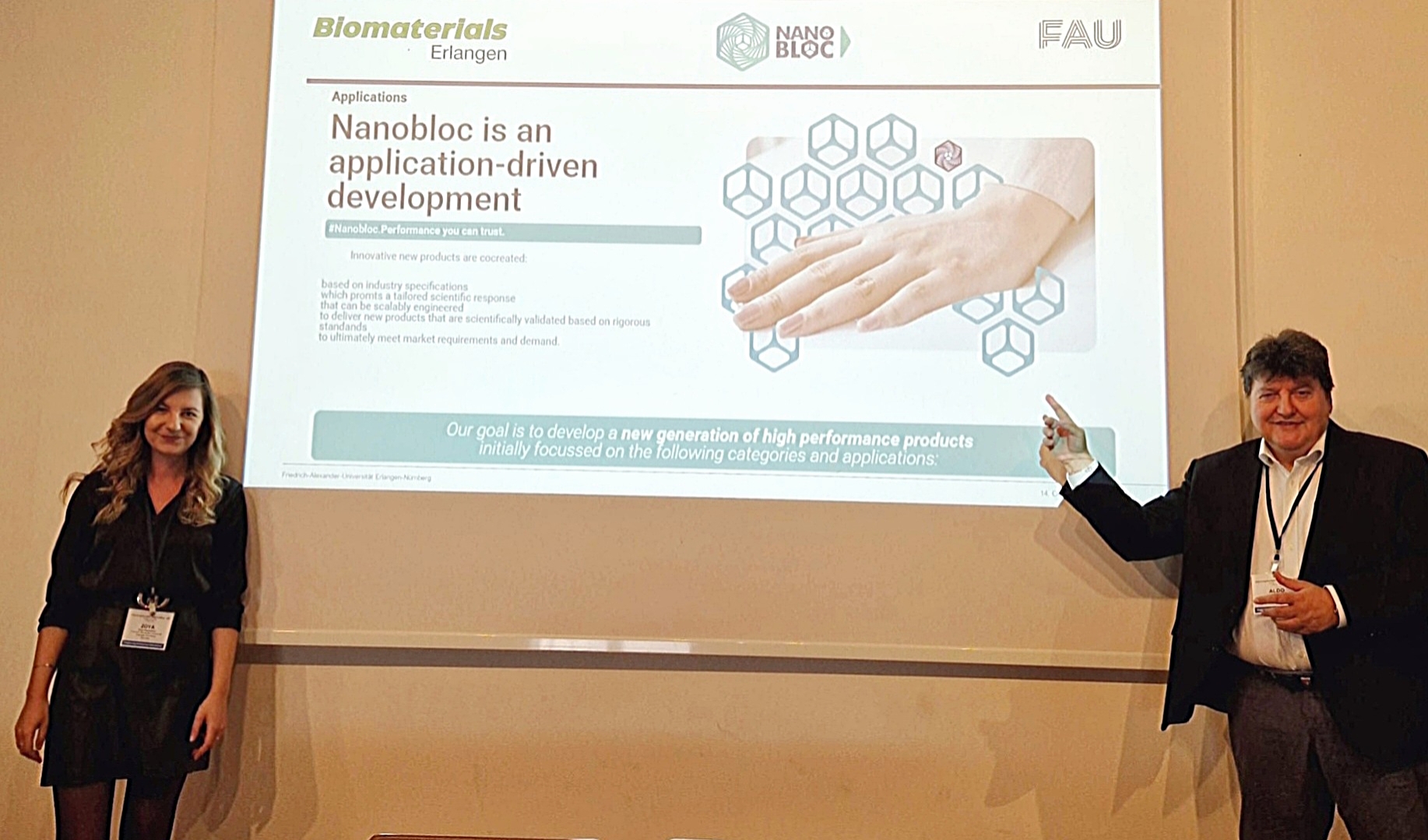The Nanobloc project was prominently featured at the 8th International Conference on Electrophoretic Deposition: Fundamentals and Applications (ECI), held from 12 to 16 October 2025 in Cetraro, Italy. This conference is part of the prestigious series organised by Engineering Conferences International (ECI), which brings together scientists and industry experts to discuss advances in materials processing, surface engineering, and functional coatings. Since its first edition, the Electrophoretic Deposition (EPD) conference has established itself as the main global forum for the development of EPD-based technologies, bridging academic research and industrial innovation. Its eighth edition continued this trajectory, with a strong focus on health-related applications, sustainable materials, and emerging antimicrobial strategies.

Representing the Friedrich-Alexander University Erlangen-Nuremberg (FAU) and the Nanobloc project, Dr. Zoya Hadzhieva from the Institute of Biomaterials (WW7) delivered a presentation on the development of chitosan-based antibacterial and antiviral coatings. Her contribution highlighted how electrophoretic deposition can be leveraged to create surface layers with protective properties relevant to healthcare settings, public infrastructure, and high-contact environments. The work addresses growing global concern regarding contamination, pathogen transmission, and the need for scalable, bio-based surface protection technologies.
In addition to Dr. Hadzhieva, Prof. Aldo R. Boccaccini, also from FAU, took part in the conference and helped represent Nanobloc in scientific discussions. Their participation strengthened the project’s visibility within the international materials science community and positioned its research within the broader context of advanced coating technologies. The presentation underscored how chitosan—a biopolymer known for its biocompatibility and antimicrobial activity—can be processed through EPD to create uniform, functionalized films suitable for diverse substrates.
The conference itself gathered experts from universities, research institutes, and industrial stakeholders to exchange results on modelling, processing techniques, and applications of EPD in fields such as energy, biomedical engineering, and protective coatings. The inclusion of antiviral and antibacterial solutions within the programme reflects the growing demand for materials capable of mitigating microbiological risks.
Nanobloc’s participation demonstrated the project’s commitment to translating research into practical outcomes. The dissemination of early results at ECI 2025 contributes to building collaborations, refining methodologies, and aligning technological development with the needs of end users. By showcasing innovative coating strategies, the project reinforces its role in advancing safe and sustainable materials for surface protection across multiple sectors.